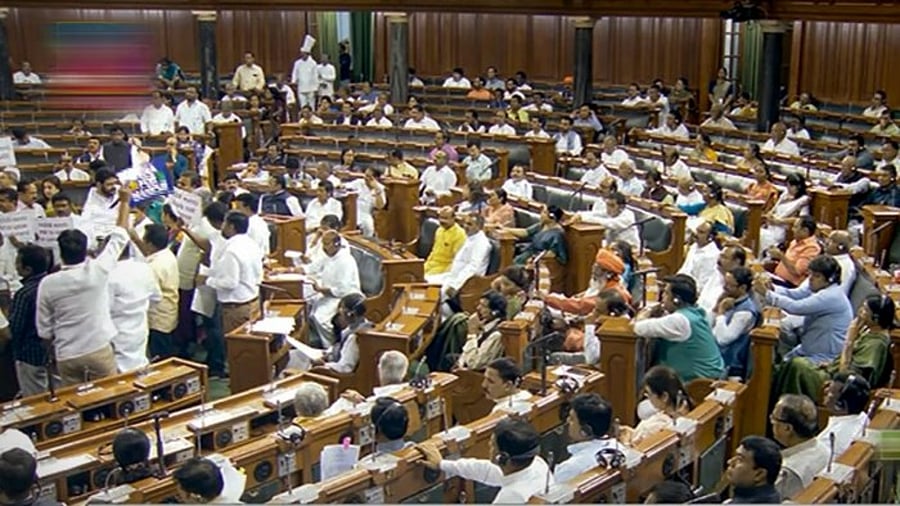
The I.N.D.I.A Opposition alliance has brought a no-confidence motion against PM Narendra Modi in the Lok Sabha. The motion was submitted by Congress’s deputy leader in the LS, Gaurav Gogoi. This is the second time after 2018 that Modi is facing such a motion in the Parliament. A number of PMs have earlier also had to face the floor test to prove that they have the support of the majority of the Parliament.
What is a no-confidence motion?
A no-confidence motion is a parliamentary procedure moved by any member of the Lok Sabha, against the ruling party under rules 198(1) and 198(5). While the motion is not explicitly stated, article 75(3) of the Indian constitution states that the Council of Ministers is responsible to the Lok Sabha.
The member who passes the motion will approach the Speaker of the House, who will enquire into how many members are in favour of the motion. If the total number of members who agree is more than 50, the motion will be taken up for further discussion. If the motion is lost by the ruling government, they must resign from office.
The motion has been passed a total of 27 times in the history of India. The first no-confidence motion was passed in 1963, against Jawaharlal Nehru by Acharya J B Kripalani. The motion was passed after the Sino-Indian War of 1962, which ended on November 21. 1962. Nehru eventually won the majority votes, thus winning the motion.
Indira Gandhi has faced the highest number of no-confidence motions during her terms. In total, she faced 15 motions against her, and did not lose any. Only three Prime Ministers have previously lost the no-confidence motion.
Shri Vishvanath Pratap Singh, leader of the National Front coalition government lost the motion in 1990, after losing the support of the Bhartiya Janata Party (BJP). HD Deve Gowda, of the Janata Dal Party lost the motion in 1997, only a few months after entering office. Atal Bihari Vajpayee faced the no confidence motion twice – once in 1996 and again in 2003. He lost the motion in 1996, only days after gaining power.
Prime Minister Narendra Modi is currently facing his second no-confidence motion, after facing one in 2018. He won the motion by a staggering 126 to 325 votes. The discussion of the current motion is still under way.
